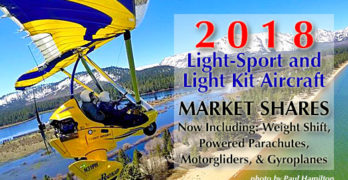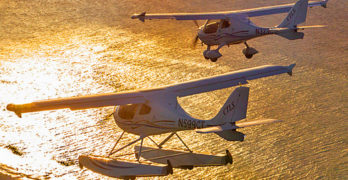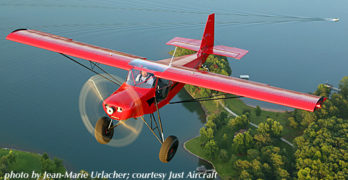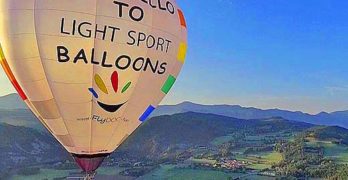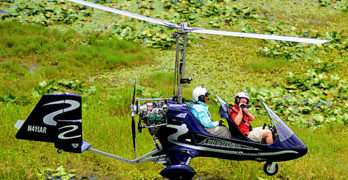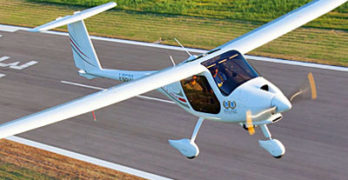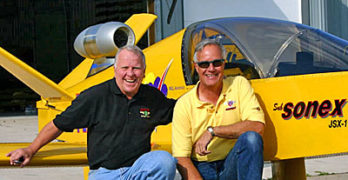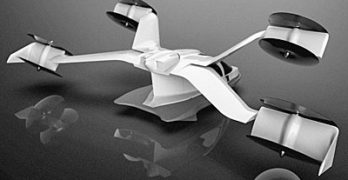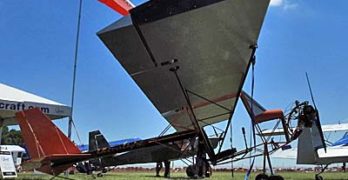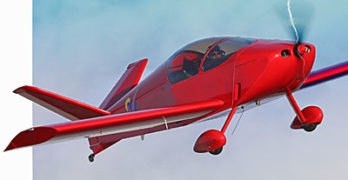If you like Light-Sport Aircraft and if you like statistics, you are going to love this article.* Our wholly refreshed look at aircraft registrations marks the return of our popular market share rankings and now includes much more information. We also provide more aircraft classes in various tables and charts and much of this is user-configurable.
Yet, as late night TV advertisers might exclaim, “That’s not all. It gets even better!”
You have always been able to consume all our market share info that includes articles about the industry and enterprise of light aviation conveniently grouped on its own page. With the relaunch of this popular and vital component of ByDanJohnson.com, you gain new ways of looking at the information. Let’s call it LSA Market Info 2.0
Introducing Tableau!
Using a new service that our associate Steve Beste engaged, check out the “Dashboard” look at the LSA industry at Tableau Public.
Search Results for : motorglider
Not finding exactly what you expected? Try our advanced search option.
Select a manufacturer to go straight to all our content about that manufacturer.
Select an aircraft model to go straight to all our content about that model.
They’re Back! — Our Very Popular Market Share Statistics Are Returning
Since shortly after ByDanJohnson.com went live (on April Fool’s Day 2004, just a few months before the LSA rule was released), one regular website feature has earned positive reviews. Our LSA market shares and ranking information was an instant hit with business people seeking data to use in running their LSA enterprises.
Before long, pilots and customers began to value the effort. Later, I discovered people in government agencies in the USA and other countries were following these reports. With that support and attention from other media outlets, our LSA Market Share reporting became a staple of this website. Oddly (it seemed to me), this was the only place you could find it.*
More and more of you have been asking about this data …and I am pleased to say it’s coming back!
Our longtime data investigator, Jan Fridrich, got an offer he couldn’t refuse to help China grow their nascent general aviation market and his time is now too committed to perform the tedious and time consuming survey of FAA’s N-number database.
Weekend News Firestorm (about LSA weight) Continues to Blaze
An article from last weekend’s news about a massive jump in LSA weight propelled this website to an all-time record as light aviation enthusiasts from around the nation and the globe signed on to make comments and shared the article with their friends.
Words you read on this website proved to be correct as more information emerges. Specifically, one large error was a quoted date for a new NPRM on this subject. Some outlets reported it would be released on January 19, 2019. NPRM is an abbreviation for Notice of Proposed Rulemaking and precedes any new regulation, allowing for comment and revision. Before such a NPRM is released, FAA has normally spoken to many parties that could be affected. That largely has not happened yet and for a good reason.
The NPRM is nowhere-near ready to be published, certainly not on such a specific date as January 19th next year.
First Lighter-than-Air Light-Sport Aircraft — FlyDoo with VTU
FAA’s Light-Sport Aircraft category involves quite the intriguing mixture of aircraft. Fixed wing aircraft of many descriptions, weight shift, powered parachute, gyroplanes, motorgliders, seaplanes, of course, and, lighter-than-air. Every niche has been well explored …except for that last one.
Now comes FlyDoo from France, an LSA-category-fitting hot-air balloon. Designer Leandro Corradini thought he could deliver something that didn’t exist in the market so he set up shop to supply envelope, basket, burner, and more in a practical, lightweight, compact, and easy-to-transport and -store package.
FlyDoo breaks down compactly enough that you could easily store it in your house or apartment. He even shows pictures of transporting it to a flying field by adding a wheel and tow bar kit to the gondola making the aircraft into a small trailer that can be towed by a bicycle.
Leandro observes that established balloon manufacturers are accustomed to working in the FAA or CAA certified aircraft environment, often building large balloons used commercially to give rides.
Gyroplanes Are Big Overseas — First Market Share Info for the USA
Updated September 26, 2018 — This article has been updated to include more producers. See at bottom. —DJ
Over many years, you have found LSA market share information on this website. Many have found this of interest …from businesses learning more about their market; to customers doing careful investigation before paying tens or hundreds of thousands of dollars for a new aircraft; to government fulfilling its task of regulating industry; to insurance companies assessing risk of providing their product; and many other actors in the blockbuster movie that is light, recreational aviation.
I will have more to say about the broader LSA market share reports below but now I want to present the best information I have seen for Light-Sport Aircraft Gyroplanes.
…uh, except for one problem. No such aircraft category exists, SLSA gyroplanes, that is.
FAA has denied fully-built Special LSA status to rotary winged aircraft such as gyroplanes.
Pipistrel Update — 900 Virus, “House Organ,” and Oshkosh Splash
In the world of Light-Sport Aircraft, we have more than 90 manufacturers and 145 Special LSA (see our whole list) accepted* by FAA. This huge diversity of design has given recreational pilots around the world a large number of ready-to-fly aircraft choices beyond anything we have seen in aviation since the beginning.
However, the old 80/20 rule still applies where (approximately) 80% of the aircraft sold are built by 20% of the manufacturers. It is a credit to this 14-year-old industry that even the smaller companies can remain viable enterprises. Very few of the 90+ manufacturers have left the business. However, most of the airplanes are made by a few top producers, which you can see in our market share charts.
Pipistrel is One of the Leaders
“Serial Number 900 leaves the factory headed for Australia,” glowed Michael Coates, the longtime distributor for Pipistrel aircraft in Australia and the United States.
High-Five and Thanks to Sonex Founder, John Monnett — What’s Next?
Early in June, John Monnett spoke about stepping down from Sonex Aircraft, the kit manufacturer he founded and has lead for decades. The company clarified, “After almost 50 years of involvement in the kit aircraft industry John has announced his retirement.”
A Half Century of Achievement
John’s roots in experimental aircraft date to 1968 when he was a young school teacher. After building a highly-modified Midget Mustang he was introduced to another Oshkosh legend, Steve Wittman (after whom the city airport is named). The two pioneers enjoyed a long friendship, which resulted in the development of Sonerai I, a Formula Vee racer that was John’s first design.
Sonerai launched John into business. A half century later, he has many designs to his credit including several iterations of the Sonerai design, the Monerai sailplane, Moni motorglider, the world-record-holding Monex racer and a complete line of Sonex Aircraft models.
Recognizing his work, John was inducted into the EAA Homebuilders Hall of Fame and is a two-time winner of the Dr.
Weird? Or, Wonderful? More Companies Move Toward eVTOL …Will Sport Pilots?
What on Earth is going on in Airplane DesignerLand? Are we headed for a bifurcation, a parting of the ways among those engineering the next generation of aircraft? Perhaps. Will this affect you? How do you feel about non-fixed-wing aircraft?
I am searching for a term to generically describe these emerging flying machines; “drones” doesn’t quite do the job. More of these seemingly-weird-looking machines seem to pop up every day.
Prior experience suggests that most will never make it to market. Ones that do succeed in the eVTOL or electric-powered aircraft market may not even exist today. For that matter, it is far from certain that this will ever turn into a market, though given the huge amounts of money pouring into research projects, it seems nearly inevitable (to me) that some will survive and perhaps have a major impact on flying, both for transportation and for sport or recreation.
Along this vein, before and at Sun ‘n Fun 2018, I spoke to officials from BRS parachutes.
Sun ‘n Fun Day 2 — Just Aircraft Solo 103, LSA Mall, and DeLand’s Reception
After a damp opening day, the sun returned on day #2 at Sun ‘n Fun 2018. A beautiful blue sky was enjoyed by crowds that appeared to grow quickly. Many likely saw yesterday’s forecast and put off attending for that day. By the end of Wednesday, though, parking aircraft filled the grounds, nearly every one of 58 display spaces in Paradise was occupied, and campgrounds were reported so full that additional area was opened.
The LSA Mall hosted by LAMA also filled up to include quite an eclectic collection of light flying machines from a 140-pound twin-engine genuine Part 103 ultralight homebuilt (Lightning Bug), a one-of-two-in-the-USA motorglider to highly affordable choices, speedy LSA cruisers, and bush-ready aircraft.
DeLand Showcase, the new airshow in early November (1st-2nd-3rd in 2018) sponsored a reception and attracted a large crowd that was fed a wonderful meal, served drinks, and entertained by live music all within clear view of the light plane area turf runway.
Happy Birthday, Sonex (20 Years!) — They Have a Gift …for You!
Because we promote this website as focused on “affordable aviation,” one of our favorite companies is Sonex. (OK, fine, we like a lot of companies but we are blessed with many doing a good job at holding down prices.)
With a big smile, I am pleased to wish Sonex Aircraft a very happy 20th birthday, as the company just announced. But wait, is that right? Is it only 20 years old?
Well… yes, and no. Sonex founder John Monnett has been building kits for much longer, more than twice as long in fact. His first homebuilders project called Monerai was a sailplane he developed in the 1970s.
The sleek machine was a conventional pod-and-boom design with a V-shaped tail and a shoulder-lever cantilevered wing. The soaring enthusiast in me loves the look of this glider that later also became a powered, self-launch sailplane.
Not long afterward came Sonerai, a completely different VW-powered homebuilt aircraft that is an obvious predecessor to the Sonex of today.
- « Previous Page
- 1
- …
- 5
- 6
- 7
- 8
- 9
- …
- 23
- Next Page »


